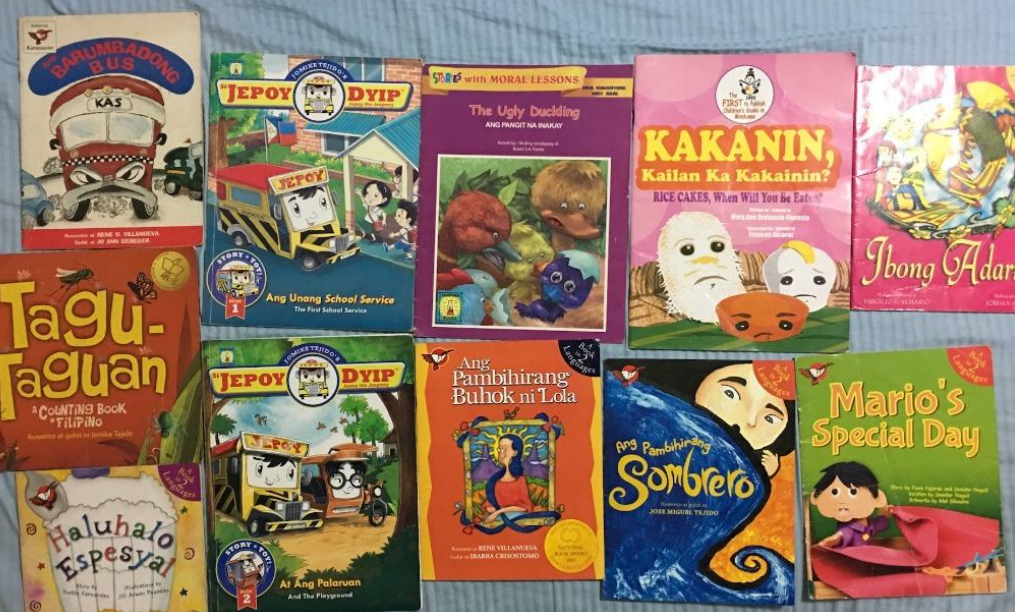Physical Address
304 North Cardinal St.
Dorchester Center, MA 02124
Physical Address
304 North Cardinal St.
Dorchester Center, MA 02124

Filipino children’s books are gaining traction in the literary world, offering a unique blend of cultural richness and imaginative storytelling. These books play a crucial role in shaping young minds, fostering a love for reading, and promoting cultural identity among Filipino children. With vibrant illustrations and engaging narratives, these books capture the essence of Filipino culture and traditions, making them an invaluable resource for both parents and educators.

Filipino children’s books reflect the diverse tapestry of the Philippines. They showcase a wide array of folklore, traditions, and everyday experiences unique to the Filipino way of life. From the enchanting tales of mythical creatures like the tikbalang and kapre to stories rooted in the everyday lives of children in the bustling streets of Manila or the serene countryside of Visayas, these books offer young readers a window into their heritage.
The emphasis on cultural identity in these books helps children develop a sense of pride and belonging. They see characters who look like them, speak their language, and live in familiar environments. This representation fosters a deeper connection to their roots and a better understanding of their own identity. Through these stories, children learn about respect, community, and the values that define Filipino society.
The rise of Filipino children’s books contributes significantly to improving reading literacy in the Philippines. These books provide an accessible and enjoyable means for children to develop their reading skills. By presenting stories that resonate with their everyday experiences, they make reading a more relatable and engaging activity.
Educators and parents use these books as tools to encourage reading from a young age. They incorporate them into educational curricula and reading programs, making literature an integral part of a child’s learning journey. This early exposure to reading not only enhances literacy skills but also ignites a lifelong love for books.
Programs and initiatives focused on distributing Filipino children’s books to underserved communities play a vital role in this effort. Organizations work tirelessly to ensure that even children in remote areas have access to quality literature. These initiatives bridge the gap in educational resources, fostering equality and providing every child the opportunity to thrive through reading.
The burgeoning popularity of Filipino children’s books can be attributed to the talented authors and illustrators who bring these stories to life. These creatives draw inspiration from their own experiences and cultural heritage, infusing their works with authenticity and depth.
Authors like Adarna House’s Virgilio Almario and Lampara Books’ Rene Villanueva have made significant contributions to the genre. They craft narratives that are not only entertaining but also educational, addressing important themes such as family, friendship, and resilience. Their stories resonate with children and adults alike, creating a shared reading experience that strengthens familial bonds.
Illustrators, too, play a crucial role in the success of these books. Their vibrant and colorful artwork captures the imagination of young readers, making the stories come alive. Artists like Kajo Baldisimo and Pepper Roxas use their illustrations to complement and enhance the narratives, providing a visual feast that captivates children’s attention and encourages them to explore the world of books.
The future of Filipino children’s books looks promising. As the demand for culturally relevant literature grows, more authors and publishers are stepping up to meet this need. Innovations in storytelling and illustration continue to emerge, offering fresh and exciting content for young readers.
Digital platforms also play a significant role in the evolution of Filipino children’s books. E-books and interactive apps make these stories more accessible to tech-savvy children, allowing them to engage with literature in new and dynamic ways. This digital shift ensures that Filipino children’s books remain relevant and continue to reach a broader audience.
Moreover, collaborations between authors, illustrators, and educators promise to bring forth even more innovative and impactful content. These partnerships focus on creating stories that not only entertain but also educate, instilling values and knowledge that are essential for a child’s development.
In conclusion, Filipino children’s books are more than just stories; they are a vital tool in nurturing young minds and preserving cultural heritage. By enhancing reading literacy in the Philippines, these books pave the way for a brighter future where every child can explore, imagine, and learn. As we celebrate the richness of Filipino literature, we look forward to the continued growth and success of this vibrant genre.